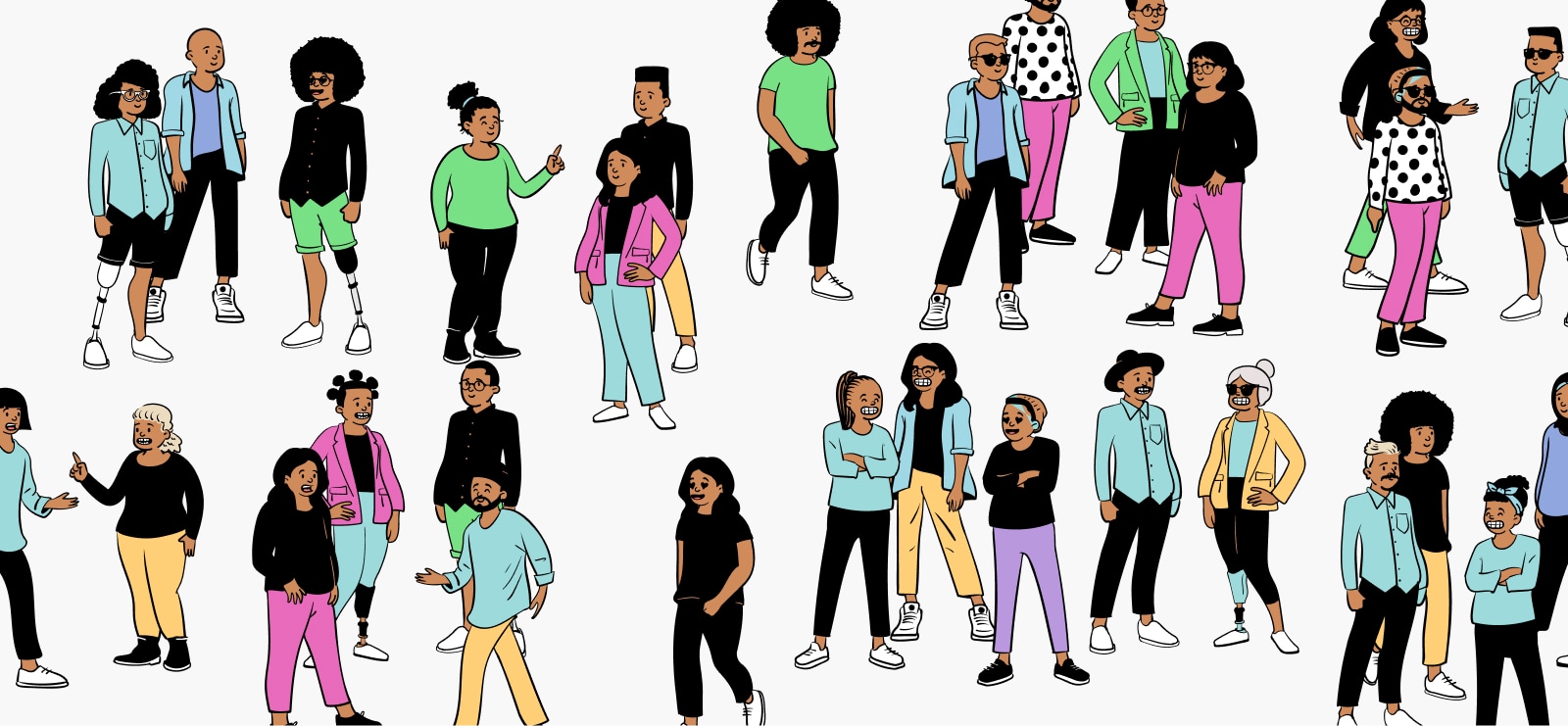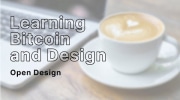
Character designs by Open Peeps
Open design
Open design welcomes the free exchange of ideas, knowledge, processes, and tools. It empowers by lifting barriers to innovation. It opens the door to scaling design projects by distributing adaptable resources.
A balance of independence and collaboration #
Open source projects are often driven by global communities. These hubs of learning and building allow you to carve an individual niche. Align yourself to projects based on your passions, talents, interests, and beliefs. Your work becomes a voluntary public contribution toward common goals. Some projects are also supported through grants and donations.
Open design communities can have multidisciplinary teams with designers, developers, copywriters, translators, project managers, etc. These diverse groups can develop stronger solutions through varied points of view.
Helpful skills #
- Ethics
- Personal responsibility
- Independence & self-motivation
- Communication
- Open-mindedness
- Respectful feedback
- Time management
- Teamwork
- Openness & transparency
Bitcoin has a spirit of openness #
We could argue bitcoin needs open design to stay true to its mission.
- bitcoin is public and open source
- It has public and unrestricted network participation
- It allows permissionless transfer of value
Thousands of projects have borrowed ideas, techniques, and code from bitcoin. Countless open-source experiments have arisen. To a designer, bitcoin is a robust foundation for collaboration. A foundation that comes with a responsibility toward the benefit of society.
This ethical responsibility encompasses application design. Most people interact with applications instead of the underlying bitcoin technical protocol. If someone controls access to an application, it won’t matter if the protocol is open. It is up to the global community to build principled bitcoin applications
Bitcoin is a protocol created to give access to anyone. Access and accessibility go hand in hand. Designing bitcoin products means working on removing barriers of entry. It means making decisions to create a unique balance of features for ease of use.
Values #
Open-source software development has existed for decades. Public review and debate have helped it create better products and services. Open design shares similar values, though it is not as known or practiced.
Integrity #
- Make moral and responsible choices
- Build with a principled foundation
Collaboration #
- Collaborate without competing
- Approach problems with an open-mind
- Share your work and process in an open and transparent way
- Make it easy for others to build on our work and ideas
- Be considerate while giving and receiving feedback
Inclusion #
- Aim for inclusiveness, usability, and accessibility
- Design features for the broadest range of people, locations, backgrounds, technological knowledge, financial literacy, etc.
- Embrace multidisciplinary feedback
Real world solutions #
- Help design products that solve real problems and address real needs
- Rely on your peers for quality assurance and validation
- Fulfill the open design group’s goals through actions
- Create functional elements that have a positive influence on how people feel and think
Discover the Bitcoin Design Community #
Our focus is on exploring best practices to improve bitcoin product design.
- Join the conversation on Slack. Navigate toward the channels that interest you. Dive into topics and conversations that draw you in.
- Identify your strengths and goals. Figure out how they may fit within the community’s vision. A good place to start is listening to a Community Call or reading our newsletter.
- Feel free to ask questions or ask for help in solving bitcoin design issues.
- See some of the community Projects.
- Visit our Contribute page.
- Follow us on Twitter
- Subscribe to our YouTube
Test, redesign, and engage in feedback #
- Experiment with bitcoin and lightning. Download a wallet and test small amounts. You can also test network features without using real bitcoin on Testnet. It works with some wallets.
- Redesign a bitcoin and/or lightning application or focus on a user experience issue that interests you. Even as a brief exercise, a redesign is a great way to develop understanding of how something works.
- Join a Design Review. A call focusing on giving feedback to improve a specific bitcoin product. Products vary by call.
- Join the Wallet Improvement Project. It tests a list of real world bitcoin projects and suggests redesigns to their makers.
Continuous learning #
Read, watch, listen, and test. You can discover great material about bitcoin and related topics (like finance). You may not find as much material on the design side of bitcoin applications.
Open up resources #
-
Try new ways of making your knowledge, tools, and workflows public and accessible to others.
-
Create free and open resources like an icon set, a UI kit, or a workshop.
Licensing #
Open-source licenses ensure freedom of access to information and resources. Their goal is to encourage openness. They also protect creators from legal liability on attribution, publicity, and trademark rights. People can use, change, and redistribute work for both personal and commercial purposes. The terms vary.
The open-source movement has created a variety of licenses.
This Bitcoin Design Guide uses three licenses (MIT license, Apache 2.0, and CC by 4.0). It is an educational resource, and some items may be subject to their own licenses. Anyone who wants to remix it, or parts of it, may choose which license to publish their work under. You can read the full license text here.
Resources #
- Open-design movement on Wikipedia
- Open Source Design community
- Articles on open design by Ushahidi
- Open Source Guide by Github
Wondering where to start? Check out the next section about the visual language of bitcoin.

